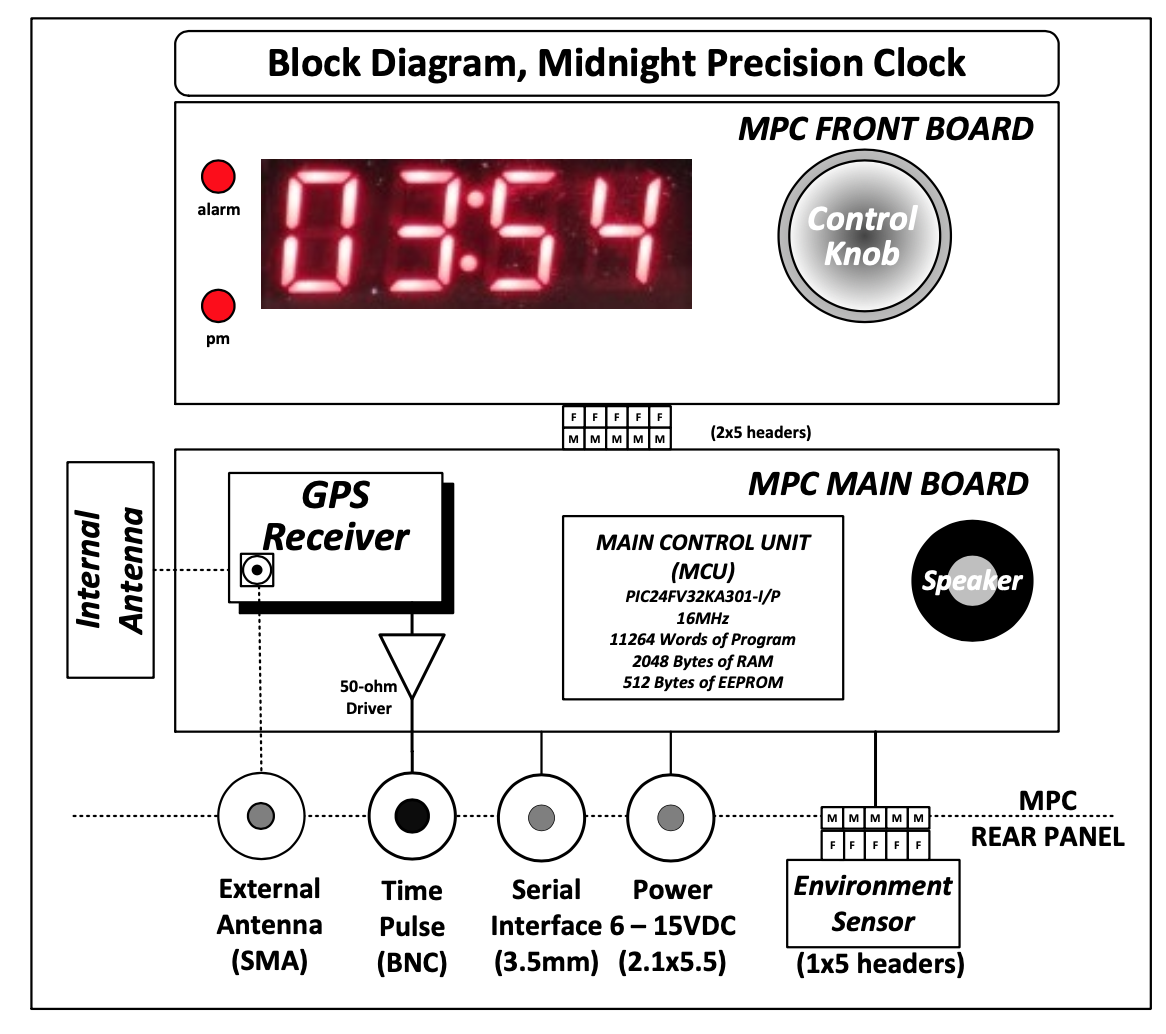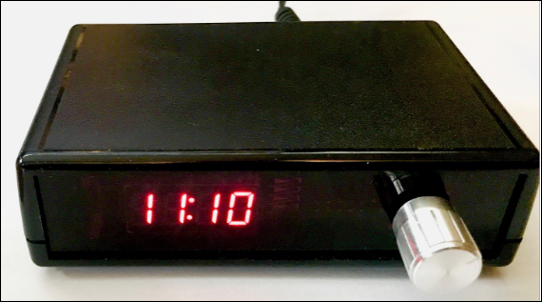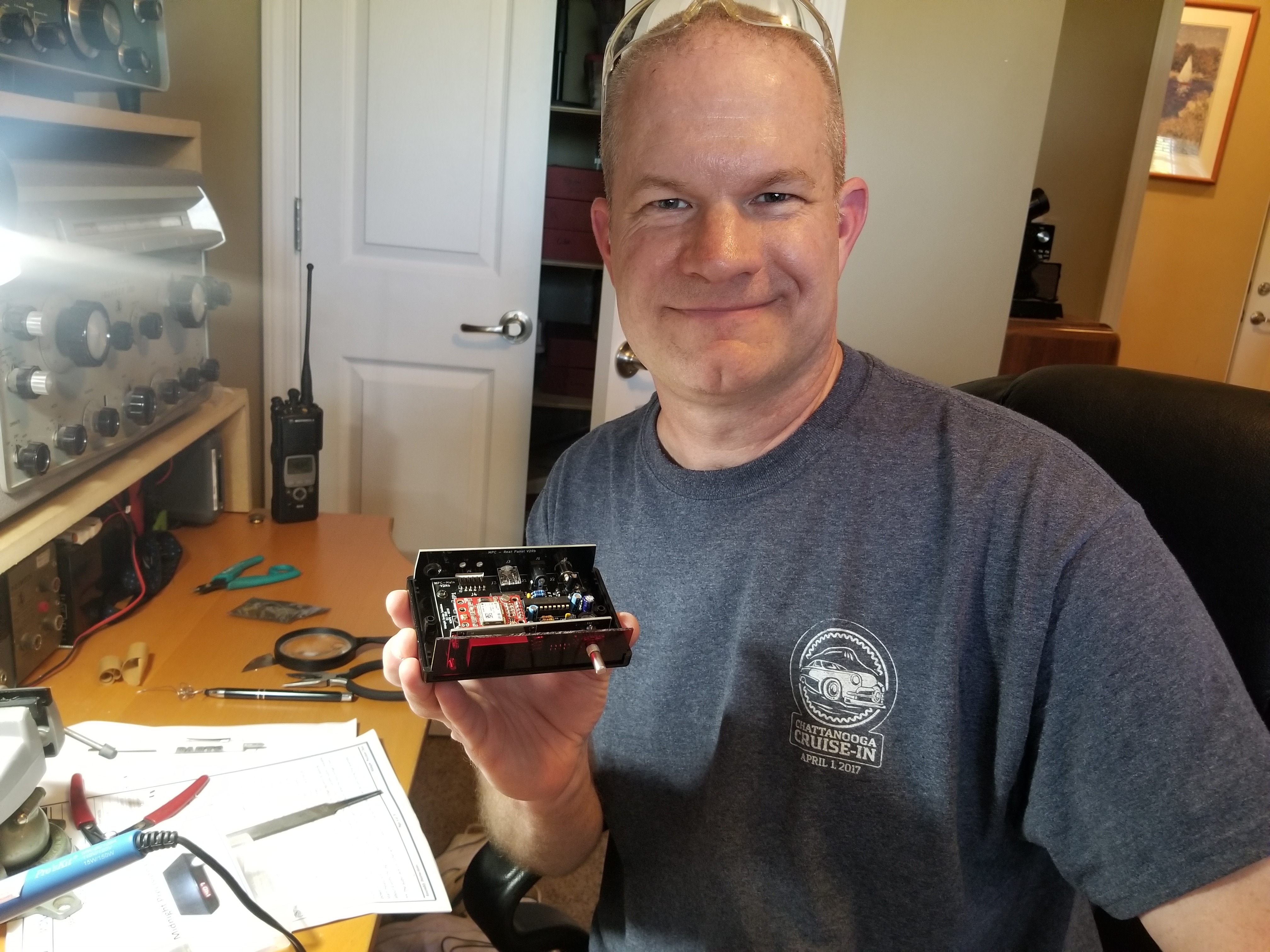|
|
Midnight Precision GPS Clock |
|
Ground plane for internally-mounted GPS antenna Order |
|
Feature-rich GPS-based clock displays accurate time with precision timing signals for your ham station! Compact Design ... Attractive 4.5"W x 1.5"H x 3" all black enclosure. Bright LED Display ... Four seven-segment characters with center colon. Simple, Intuitive Control ... Single rotary control Local and UTC time displays ... Displays time in HH:MM format. Super Accurate Clock ... Built-in GPS receiver GPS Status Display ... Shows number of satellites Signal Generator ... Precision squarewave output (1 Hz to 10 MHz). Alarm Function ... Visual and audio alarm function. Maidenhead Location ... Computed and displayed. Barometric Pressure ... Displays air pressure (inches or millibars). Temperature ... Displays ambient temperature in oF , oC , or oK. Settings saved in memory ... UTC offset, alarm time, and siggen freq |
|
|
An inexpensive GPS-based clock for your ham shack provides precise and accurate display of time, temperature, altitude, barometric pressure, maidenhead location, and timing signals from 1 Hz to 10 MHz … all in a small, attractive form-factor. Here’s an interesting project that utilizes an inexpensive GPS receiver board often used for flight control in R/C aircraft, as the basis for a nifty station accessory … a GPS-based clock. But it’s so much more than just a clock, as we use the location and time information provided in standard serial NMEA format for other purposes of importance to us hams. There’s no doubt that time is an important metric in the ham shack, not only for the normal uses like for scheduled nets, for ID’ing during QSO, for logging a contact in UTC, or as a reminder to occasionally step away from the radios and say hi to the family. But accurate time, and hence frequency, can be hugely important as the basis of transmission control for the digital modes and for making detailed measurements on the test bench. We added a microcontroller easily programmed in C and a couple other useful modules to created something much bigger than its parts. We’ve been using the “Midnight Precision Clock” (MPC) in our respective shacks on both sides of the country for the past year with stellar results. By the way, we christened the project with this name because midnight is when we usually work together in real time, after the day job is done in Maryland and after the grandkids have gone to bed in Arizona. True remote collaboration! Group Build at our Ham Radio Club Workshop In order to thoroughly test the design of the MPC, we conducted a group build with the local ham radio club here in Tennessee: Tellico Lake Amateur Radio Club (TLARC). Fifteen ham participated in the workshop, with kitbuilding experience skillsets ranging from novice-to-medium. The MPC kit was designed using only through-hole parts, so construction was straightforward while following a good assembly guide and kind-hearted personal guidance. By the end of the three-hour workshop, eight hams successfully completed their MPCs, four had minor problems to be solved later on, and three gave up along the way. Soldering skills and inadequate tools (low-wattage soldering pencils with fat and bludgeoned tips) were a major factor in the problems encountered. We worked through most of those issues with hands-on guidance during the workshop. See the photo gallery here on this page for some shots of our workshop.
|


-
How do I adjust clock to read correctly when going to Standard time (in the Fall) and Daylight Savings Time (in the Spring)?
You can adjust the “GMT Offset GMT” to to accommodate this change. For example, the Eastern US time zone is 4 hours behind GMT during EDT, but is 5 hours behind during EST, so just adjust the GMT Offset to '5' in the Fall and '4' in the Spring. This adjustment is done by first moving the display to GMT time display (flashing colon). Then press the encoder to show the current offset (4), increase to show '5', then press two or three more times to get back to the normal display.
Kit: ...
OUT OF STOCK+ Shipping (US: $10, DX: $28)
Check or Money Order:
Midnight Design Solutions
205 Okema Trace
Loudon, TN 37774 USA
Copyright 2019-2021 Midnight Design
Solutions, LLC. All Rights Reserved.
Page last updated: Jan 18, 2021




